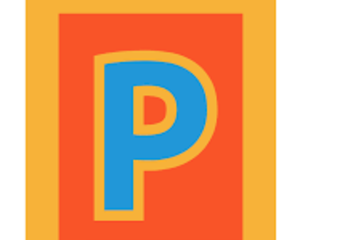We found 67 results that contain "visual basics"
Posted on: #iteachmsu

Visual and Environmental Prompts:
Use behavioral and environmental prompts to increase desired classroom behaviors. For example, pictorial prompts of students attending in class serve as a reminder of the teacher’s expectations for learning and behavior. Electronic visual aids such as interactive whiteboards and document cameras are helpful for capturing the attention of students with ADHD (Piffner, 2011).
https://www.cliffsnotes.com/study-guides/principles-of-management/the-evolution-of-management-thought/behavioral-management-theory
Additionally, the use of tablets and computers may engage students more fully in learning activities.
Priming Procedure: Prime the student before an assignment or lesson byreviewing a list of student-identified privileges or reinforcements that can beearned following a specified work period.
Proximity Control: Teacher proximity is highly effective for helping studentswith ADHD maintain attention. For example, the teacher may move closer to thestudent when giving directions and monitoring seatwork.
Timers: Set a timer to indicate how much time remains in the lesson or workperiod. The timer should be clearly visible so students can check remaining timeand monitor their progress.
Wristwatch or Smartphone: Teach the student to use a wristwatch orsmartphone to manage time when completing assigned work. Many watches andsmartphones have built-in timers that can be programmed to beep at set intervals.
Music: Play different levels and tempos of music to help students understand theactivity level appropriate for particular lessons. For example, using quiet classicalmusic for individual learning activities helps block distractions and creates a calmclassroom environment (U.S. Department of Education, 2006).
Children with ADHD require specific and frequent feedback and/or reinforcementimmediately following the demonstration of desired behaviors. When students arelearning new behaviors, it is generally important to reinforce close approximations firstas a way to shape behavior. Once a behavior is established, the frequency ofreinforcement can be gradually decreased. Students with ADHD tend to quickly loseinterest with repetition, so a variety of easy-to-implement reinforcers should beconsidered.Praise, Praise, Praise: Attentiveness and appropriate classroom behavior areprerequisites for learning; therefore, interventions that promote these behaviorsshould be an integral part of the teaching process for all students. When teachersare attentive to positive behavior and specifically praise students for thesebehaviors, they can engage students before their attention drifts while highlightingdesired behavior (U.S. Department of Education, 2006).
https://www.cliffsnotes.com/study-guides/principles-of-management/the-evolution-of-management-thought/behavioral-management-theory
Additionally, the use of tablets and computers may engage students more fully in learning activities.
Priming Procedure: Prime the student before an assignment or lesson byreviewing a list of student-identified privileges or reinforcements that can beearned following a specified work period.
Proximity Control: Teacher proximity is highly effective for helping studentswith ADHD maintain attention. For example, the teacher may move closer to thestudent when giving directions and monitoring seatwork.
Timers: Set a timer to indicate how much time remains in the lesson or workperiod. The timer should be clearly visible so students can check remaining timeand monitor their progress.
Wristwatch or Smartphone: Teach the student to use a wristwatch orsmartphone to manage time when completing assigned work. Many watches andsmartphones have built-in timers that can be programmed to beep at set intervals.
Music: Play different levels and tempos of music to help students understand theactivity level appropriate for particular lessons. For example, using quiet classicalmusic for individual learning activities helps block distractions and creates a calmclassroom environment (U.S. Department of Education, 2006).
Children with ADHD require specific and frequent feedback and/or reinforcementimmediately following the demonstration of desired behaviors. When students arelearning new behaviors, it is generally important to reinforce close approximations firstas a way to shape behavior. Once a behavior is established, the frequency ofreinforcement can be gradually decreased. Students with ADHD tend to quickly loseinterest with repetition, so a variety of easy-to-implement reinforcers should beconsidered.Praise, Praise, Praise: Attentiveness and appropriate classroom behavior areprerequisites for learning; therefore, interventions that promote these behaviorsshould be an integral part of the teaching process for all students. When teachersare attentive to positive behavior and specifically praise students for thesebehaviors, they can engage students before their attention drifts while highlightingdesired behavior (U.S. Department of Education, 2006).
Authored by: Piffner, 2011
Posted on: Nutrition -- Edited...


By Shravya: What is nutrition and why is nutrition important? public child grp , public article
At the most basic level, nutrition is about eating a regular, balanced diet. Good nutrition helps fuel your body. The foods you eat supply the nutrients your body needs to maintain your brain, muscle, bone, nerves, skin, blood circulation, and immune system. Proper nutrition also helps protect you from illness and disease such as heart disease, diabetes, cancer, and osteoporosis.
There are two major classes of nutrients in food: macronutrients and micronutrients. Macronutrients are carbohydrates, protein, and fat. They supply energy (in the form of calories) and serve as the building blocks for muscles and tissues.
In comparison, micronutrients are individual vitamins and minerals. They are divided into four categories: water-soluble vitamins, fat-soluble vitamins, microminerals, and trace minerals.
While most foods in plant-based diets offer important health benefits, certain ones stand out. These "superfoods" pack the biggest nutritional punch. People should try to eat some of these healthy foods every day or as often as possible. They include the following:
Berries. High in fiber, berries are naturally sweet, and their rich colors mean they are high in antioxidants and disease-fighting nutrients.
Fatty fish. Fatty fish can be a good source of protein and omega-3 fatty acids, which help prevent heart disease. Those with the highest omega-3 content are salmon, mackerel, trout, anchovies, and sardines.
Leafy greens. Dark, leafy greens are a good source of vitamin A, vitamin C, and calcium, as well as several phytochemicals (chemicals made by plants) that fight inflammation and protect cells from damage.
Nuts. Hazelnuts, walnuts, almonds, and pecans are good plant protein sources. They also contain monounsaturated fats, which may be a factor in reducing the risk of heart disease.
Olive oil. Olive oil is a good source of vitamin E, polyphenols, and monounsaturated fatty acids, all of which help reduce the risk of heart disease.
Whole grains. A good source of soluble and insoluble fiber, whole grains also contain several B vitamins and minerals. They have been shown to lower cholesterol and protect against heart disease and diabetes.
Yogurt. A good source of calcium and protein, yogurt contains live cultures called probiotics. These "good bacteria" can protect the body from other harmful bacteria.
Cruciferous vegetables. These include broccoli, Brussels sprouts, cabbage, cauliflower, collard greens, kale, kohlrabi, mustard greens, radishes, and turnips. They are an excellent source of fiber, vitamins, and phytochemicals, which may help prevent some types of cancer.
Legumes. This broad category includes kidney, black, red, and garbanzo beans, soybeans, and peas. Legumes are an excellent source of fiber, folate, and protein; studies show they can help reduce the risk of heart disease.
There are two major classes of nutrients in food: macronutrients and micronutrients. Macronutrients are carbohydrates, protein, and fat. They supply energy (in the form of calories) and serve as the building blocks for muscles and tissues.
In comparison, micronutrients are individual vitamins and minerals. They are divided into four categories: water-soluble vitamins, fat-soluble vitamins, microminerals, and trace minerals.
While most foods in plant-based diets offer important health benefits, certain ones stand out. These "superfoods" pack the biggest nutritional punch. People should try to eat some of these healthy foods every day or as often as possible. They include the following:
Berries. High in fiber, berries are naturally sweet, and their rich colors mean they are high in antioxidants and disease-fighting nutrients.
Fatty fish. Fatty fish can be a good source of protein and omega-3 fatty acids, which help prevent heart disease. Those with the highest omega-3 content are salmon, mackerel, trout, anchovies, and sardines.
Leafy greens. Dark, leafy greens are a good source of vitamin A, vitamin C, and calcium, as well as several phytochemicals (chemicals made by plants) that fight inflammation and protect cells from damage.
Nuts. Hazelnuts, walnuts, almonds, and pecans are good plant protein sources. They also contain monounsaturated fats, which may be a factor in reducing the risk of heart disease.
Olive oil. Olive oil is a good source of vitamin E, polyphenols, and monounsaturated fatty acids, all of which help reduce the risk of heart disease.
Whole grains. A good source of soluble and insoluble fiber, whole grains also contain several B vitamins and minerals. They have been shown to lower cholesterol and protect against heart disease and diabetes.
Yogurt. A good source of calcium and protein, yogurt contains live cultures called probiotics. These "good bacteria" can protect the body from other harmful bacteria.
Cruciferous vegetables. These include broccoli, Brussels sprouts, cabbage, cauliflower, collard greens, kale, kohlrabi, mustard greens, radishes, and turnips. They are an excellent source of fiber, vitamins, and phytochemicals, which may help prevent some types of cancer.
Legumes. This broad category includes kidney, black, red, and garbanzo beans, soybeans, and peas. Legumes are an excellent source of fiber, folate, and protein; studies show they can help reduce the risk of heart disease.
Authored by: Vija
Justice and Belonging
Posted on: #iteachmsu


Are there any advances in this direction that you think hold promise?
The basic idea of intelligence:An explosion is that once machines reach a certain level of intelligence, they’ll be able to work on AI just like we do and improve their own capabilities — redesign their own hardware and so on — and their intelligence will zoom off the charts. There’s an area emerging called “cyber-physical systems” about systems that couple computers to the real world. With a cyber-physical system, you’ve got a bunch of bits representing an air traffic control program, and then you’ve got some real airplanes, and what you care about is that no airplanes collide. You’re trying to prove a theorem about the combination of the bits and the physical world. What you would do is write a very conservative mathematical description of the physical world — airplanes can accelerate within such-and-such envelope — and your theorems would still be true in the real world as long as the real world is somewhere inside the envelope of behaviors.
Yet you’ve pointed out that it might not be mathematically possible to formally verify AI systems.
There’s a general problem of “undecidability” in a lot of questions you can ask about computer programs. Alan Turing showed that no computer program can decide whether any other possible program will eventually terminate and output an answer or get stuck in an infinite loop. So if you start out with one program, but it could rewrite itself to be any other program, then you have a problem, because you can’t prove that all possible other programs would satisfy some property.
Yet you’ve pointed out that it might not be mathematically possible to formally verify AI systems.
There’s a general problem of “undecidability” in a lot of questions you can ask about computer programs. Alan Turing showed that no computer program can decide whether any other possible program will eventually terminate and output an answer or get stuck in an infinite loop. So if you start out with one program, but it could rewrite itself to be any other program, then you have a problem, because you can’t prove that all possible other programs would satisfy some property.
Authored by: Rupali
Assessing Learning
Posted on: #iteachmsu


Collaborative Education
Reflection
Prompt
Were you successful in providing opportunities for students? Why or why not? What improvements or revisions could be included?
How did you provide instruction and formative feedback on these habits, skills, and dispositions to students along the way?
If you were to embed habits, skills, and/or dispositions in another performance, what would you do differently from this time?
Prompt
Were you successful in providing opportunities for students? Why or why not? What improvements or revisions could be included?
How did you provide instruction and formative feedback on these habits, skills, and dispositions to students along the way?
If you were to embed habits, skills, and/or dispositions in another performance, what would you do differently from this time?
Posted by: Chathuri Hewapathirana
Disciplinary Content
Posted on: #iteachmsu


Augmented Reality
Augmented reality (AR) is an interactive experience of a real-world environment where the objects that reside in the real world are enhanced by computer-generated perceptual information, sometimes across multiple sensory modalities, including visual, auditory, haptic, somatosensory and olfactory.
Authored by: Divya Sawant
Posted on: #iteachmsu


Graphical user interface
graphical user interface:
The graphical user interface (GUI is a form of user interface that allows users to interact with electronic devices through graphical icons and audio indicators such as primary notation, instead of text-based user interfaces, typed command labels, or text navigation. GUIs were introduced in reaction to the perceived steep learning curve of command-line interfaces (CLIs), which require commands to be typed on a computer keyboard.
The actions in a GUI are usually performed through direct manipulation of the graphical elements. Beyond computers, GUIs are used in many handheld mobile devices such as MP3 players, portable media players, gaming devices, smartphones, and smaller household, office, and industrial controls. The term GUI tends not to be applied to other lower-display resolution types of interfaces, such as video games ), or not including flat screens, like volumetric displays.
User interface and interaction design:
Designing the visual composition and temporal behavior of a GUI is an important part of software application programming in the area of human-computer interaction. Its goal is to enhance the efficiency and ease of use for the underlying logical design of a stored program, a design discipline named usability. Methods of user-centered design are used to ensure that the visual language introduced in the design is well-tailored to the tasks.
The visible graphical interface features of an application are sometimes referred to as chrome or GUI (pronounced gooey) Typically, users interact with information by manipulating visual widgets that allow for interactions appropriate to the kind of data they hold. The widgets of a well-designed interface are selected to support the actions necessary to achieve the goals of users.
The graphical user interface (GUI is a form of user interface that allows users to interact with electronic devices through graphical icons and audio indicators such as primary notation, instead of text-based user interfaces, typed command labels, or text navigation. GUIs were introduced in reaction to the perceived steep learning curve of command-line interfaces (CLIs), which require commands to be typed on a computer keyboard.
The actions in a GUI are usually performed through direct manipulation of the graphical elements. Beyond computers, GUIs are used in many handheld mobile devices such as MP3 players, portable media players, gaming devices, smartphones, and smaller household, office, and industrial controls. The term GUI tends not to be applied to other lower-display resolution types of interfaces, such as video games ), or not including flat screens, like volumetric displays.
User interface and interaction design:
Designing the visual composition and temporal behavior of a GUI is an important part of software application programming in the area of human-computer interaction. Its goal is to enhance the efficiency and ease of use for the underlying logical design of a stored program, a design discipline named usability. Methods of user-centered design are used to ensure that the visual language introduced in the design is well-tailored to the tasks.
The visible graphical interface features of an application are sometimes referred to as chrome or GUI (pronounced gooey) Typically, users interact with information by manipulating visual widgets that allow for interactions appropriate to the kind of data they hold. The widgets of a well-designed interface are selected to support the actions necessary to achieve the goals of users.
Authored by: Rupali
Posted on: #iteachmsu


Before spectroscopic analysis (IR, NMR) became commonplace in the organic chemistry lab
Before spectroscopic analysis (IR, NMR) became commonplace in the organic chemistry lab, chemical tests were heavily relied upon to support compound identification. A chemical test is typically a fast reaction performed in a test tube that gives a dramatic visual clue (a color change, precipitate, or gas formation) as evidence for a chemical reaction. For example, addition of an orange chromic acid reagent to some compounds causes the chromium reagent to change to a blue-green color (Figure 6.37a). This is considered a "positive" test result, and in this case indicates the presence of a functional group that can be oxidized (alcohol or aldehyde). A negative test result is retention of the original color of the reagent, in this case the orange color
https://chem.libretexts.org/Bookshelves/Organic_Chemistry/Book%3A_Organic_Chemistry_Lab_Techniques_(Nichols)/06%3A_Miscellaneous_Techniques/6.04%3A_Chemical_Tests/6.4A%3A_Overview_of_Chemical_Tests
https://chem.libretexts.org/Bookshelves/Organic_Chemistry/Book%3A_Organic_Chemistry_Lab_Techniques_(Nichols)/06%3A_Miscellaneous_Techniques/6.04%3A_Chemical_Tests/6.4A%3A_Overview_of_Chemical_Tests
Posted by: Chathuri Super admin..
Navigating Context
Posted on: #iteachmsu


Description is the pattern of narrative development that aims to make vivid a place, object, charact
Description is the pattern of narrative development that aims to make vivid a place, object, character, or group. Description is one of four rhetorical modes, along with exposition, argumentation, and narration. In practice it would be difficult to write literature that drew on just one of the four basic modes.Description is the pattern of narrative development that aims to make vivid a place, object, character, or group. Description is one of four rhetorical modes, along with exposition, argumentation, and narration. In practice it would be difficult to write literature that drew on just one of the four basic modes.
Authored by: MK
Disciplinary Content
Posted on: #iteachmsu
![Article preview image]()
Lorem Ipsum is simply dummy text of the printing and typesetting industry. Lorem Ipsum has been the industry's standard dummy text ever since the 1500s, when an unknown printer took a galley of type and scrambled it to
Posted by: Chathuri Super admin..
Posted on: #iteachmsu

Data Science is a process of extracting, manipulating, visualizing, maintaining data as well as generating predictions.
A Data Scientist is supposed to have knowledge of various data operations as well as machine learning algorithms. Using Data Science, industries are able to extract insights and forecast their performance.
A Data Scientist is supposed to have knowledge of various data operations as well as machine learning algorithms. Using Data Science, industries are able to extract insights and forecast their performance.
Posted by: Chathuri Super admin..
Assessing Learning
Posted on: #iteachmsu


Artificial intelligence (AI) aims to or is required to synthesize goal-orientated processes such as problem-solving, decision-making, environmental adaptation, learning, and communication found in humans and animals.
https://www.w3.org/TR/UNDERSTANDING-WCAG20/visual-audio-contrast-scale.html
artificial intelligence research has been necessarily cross-disciplinary, drawing on areas of expertise such as applied mathematics, symbolic logic, semiotics, electrical engineering, neurophysiology, and social intelligence.
https://www.w3.org/TR/UNDERSTANDING-WCAG20/visual-audio-contrast-scale.html
artificial intelligence research has been necessarily cross-disciplinary, drawing on areas of expertise such as applied mathematics, symbolic logic, semiotics, electrical engineering, neurophysiology, and social intelligence.
Posted by: Rupali Jagtap
Assessing Learning
Posted on: #iteachmsu


Giving a presentation to fellow classmates can be a bit daunting, especially if you are new to oral and visual presenting. But with the right PowerPoint tips, public speaking skills, and plenty of practice, you can present like a pro at your upcoming presentation. Here, we’ve laid out the best college presentation tips for students. And once you have one successful presentation, you’ll get better each time!
https://www.youtube.com/watch?v=V8eLdbKXGzk&ab_channel=ProjectIDEA
https://www.youtube.com/watch?v=V8eLdbKXGzk&ab_channel=ProjectIDEA
Posted by: Chathuri Super admin..
Posted on: #iteachmsu

Data Science::
Data Science is a comprehensive process that involves preprocessing, analysis, visualization, and prediction. On the other hand, AI is the implementation of a predictive model to forecast future events.
A Data Scientist, on the other hand, helps the company and businesses to make careful data-driven decisions. A Data Scientist is responsible for extracting data using SQL and NoSQL queries, cleaning various anomalies in the data, analyzing the patterns in data, and applying predictive models.
Data Science is a comprehensive process that involves preprocessing, analysis, visualization, and prediction. On the other hand, AI is the implementation of a predictive model to forecast future events.
A Data Scientist, on the other hand, helps the company and businesses to make careful data-driven decisions. A Data Scientist is responsible for extracting data using SQL and NoSQL queries, cleaning various anomalies in the data, analyzing the patterns in data, and applying predictive models.
Posted by: Rupali Jagtap
Assessing Learning
Posted on: #iteachmsu

Graphical user interface design principles conform to the model–view–controller software pattern, which separates internal representations of information from the manner in which information is presented to the user, resulting in a platform where users are shown which functions are possible rather than requiring the input of command codes. Users interact with information by manipulating visual widgets, which are designed to respond in accordance with the type of data they hold and support the actions necessary to complete the user’s task.
Posted by: Chathuri Super admin..
Assessing Learning
Posted on: #iteachmsu


Description is the pattern of narrative development that aims to make vivid a place, object, character, or group. Description is one of four rhetorical modes, along with exposition, argumentation, and narration. In practice it would be difficult to write literature that drew on just one of the four basic modesDescription is the pattern of narrative development that aims to make vivid a place, object, character, or group. Description is one of four rhetorical modes, along with exposition, argumentation, and narration. In practice it would be difficult to write literature that drew on just one of the four basic modesDescription is the pattern of narrative development that aims to make vivid a place, object, character, or group. Description is one of four rhetorical modes, along with exposition, argumentation, and narration. In practice it would be difficult to write literature that drew on just one of the four basic modesDescription is the pattern of narrative development that aims to make vivid a place, object, character, or group. Description is one of four rhetorical modes, along with exposition, argumentation, and narration. In practice it would be difficult to write literature that drew on just one of the four basic modesDescription is the pattern of narrative development that aims to make vivid a place, object, character, or group. Description is one of four rhetorical modes, along with exposition, argumentation, and narration. In practice it would be difficult to write literature that drew on just one of the four basic modes.
Posted by: Nicolas Cage
Disciplinary Content
Posted on: #iteachmsu


PO-Description is the pattern of narrative development that aims to make vivid a place, object, character, or group. Description is one of four rhetorical modes, along with exposition, argumentation, and narration. In practice it would be difficult to write literature that drew on just one of the four basic modesDescription is the pattern of narrative development that aims to make vivid a place, object, character, or group. Description is one of four rhetorical modes, along with exposition, argumentation, and narration. In practice it would be difficult to write literature that drew on just one of the four basic modesDescription is the pattern of narrative development that aims to make vivid a place, object, character, or group. Description is one of four rhetorical modes, along with exposition, argumentation, and narration. In practice it would be difficult to write literature that drew on just one of the four basic modes.
Posted by: Chathuri Super admin..
Assessing Learning
Host: MSU Libraries

Best Practices in Data Visualization
Learn general best practices for creating data visualizations. This workshop will describe the overarching goals of data visualization and provide criteria for evaluating the effectiveness of a visualization. This workshop will also offer tool suggestions for beginners exploring data visualization.
Navigating Context
Host: MSU Libraries

3D Terrain Elevation Models for 3D Printing (Online)
Learn how to produce a 3D model of terrain elevation for printing on a 3D printer. We will learn about 3D models for 3D printing, digital elevation models (DEMs), where to find DEM data to create our printable export, and then use a plug in DEMto3D in the open source software QGIS to create a model. If time allows, basic tools for 3D model editing in Meshmixer or slicing software will be demonstrated.
Navigating Context
Host: MSU Libraries

Learn QGIS: Making a color shaded map in QGIS (Online)
Learn the basics of QGIS, the free open-source geospatial software—this workshop will demonstrate how to make a choropleth (color shaded) map and place graduated symbols representing data on it, load shape-files and .csv table files into QGIS, join data to spatial information and edit features. No experience with QGIS or Geographic Information Systems is required.
Navigating Context
Host: MSU Libraries

Sew What? Getting Started with a Sewing Machine
Discover the joy of sewing! This beginner-friendly session will guide you through the essentials of how a sewing machine works, using a mechanical sewing machine. Learn valuable skills while creating a project to take home. Perfect for anyone eager to learn the basics, this workshop is designed to boost your confidence and spark creativity!
Navigating Context
Host: MSU Libraries

Research Data Management: Best Practices for organizing and managing your data
Why is research data management so important? This workshop will help you plan for organizing and managing your data from the outset of your project.
We will look at some basic best practices for:
organizing your data
cleaning/prepping/working with your data
working with multiple data files
storage solutions
long-term archiving and making your data accessible to other researchers
Navigating Context
Host: MSU Libraries

Artist Workshop: Using 360 Cameras to Show Changes to Place
Join the DSL Graduate Arts Fellow, Hailey Becker (Art, Art History and Design and Forestry) in a workshop on using 360 cameras to capture changes to place. Participants will be guided through the basics of recording and editing 360 footage, ending with their footage being displayed in the Digital Scholarship Lab 360 Room. Using 360 footage can be a great way to archive an artistic practice or scientific research. No experience required, all levels welcome!
Navigating Context
EXPIRED
